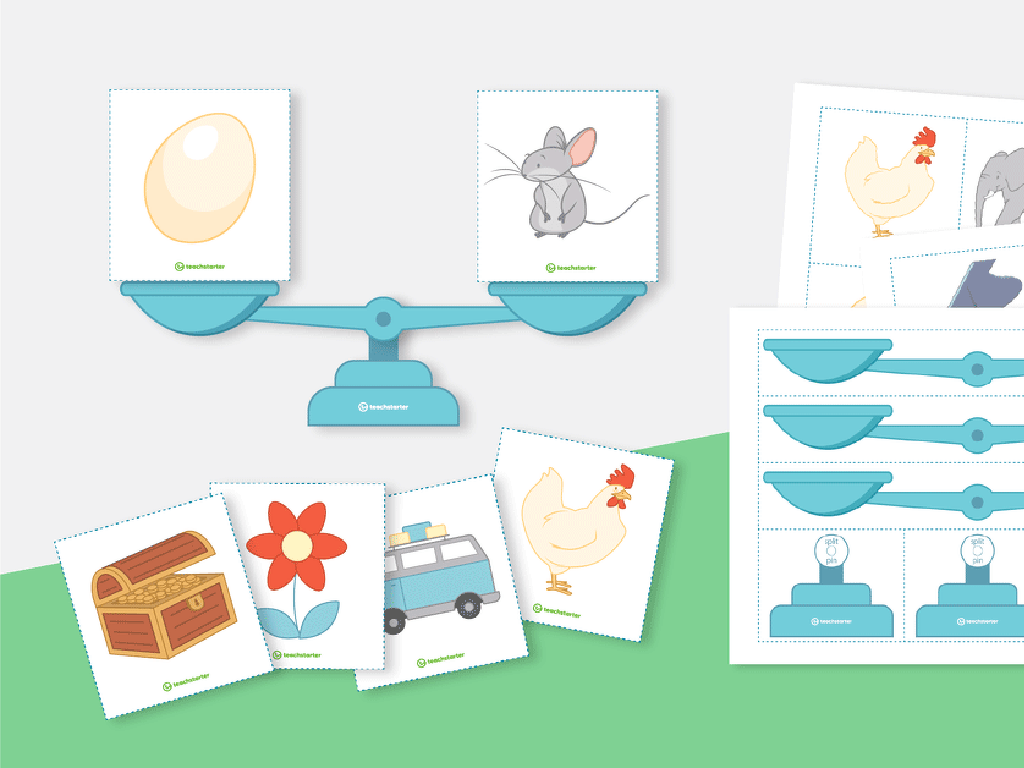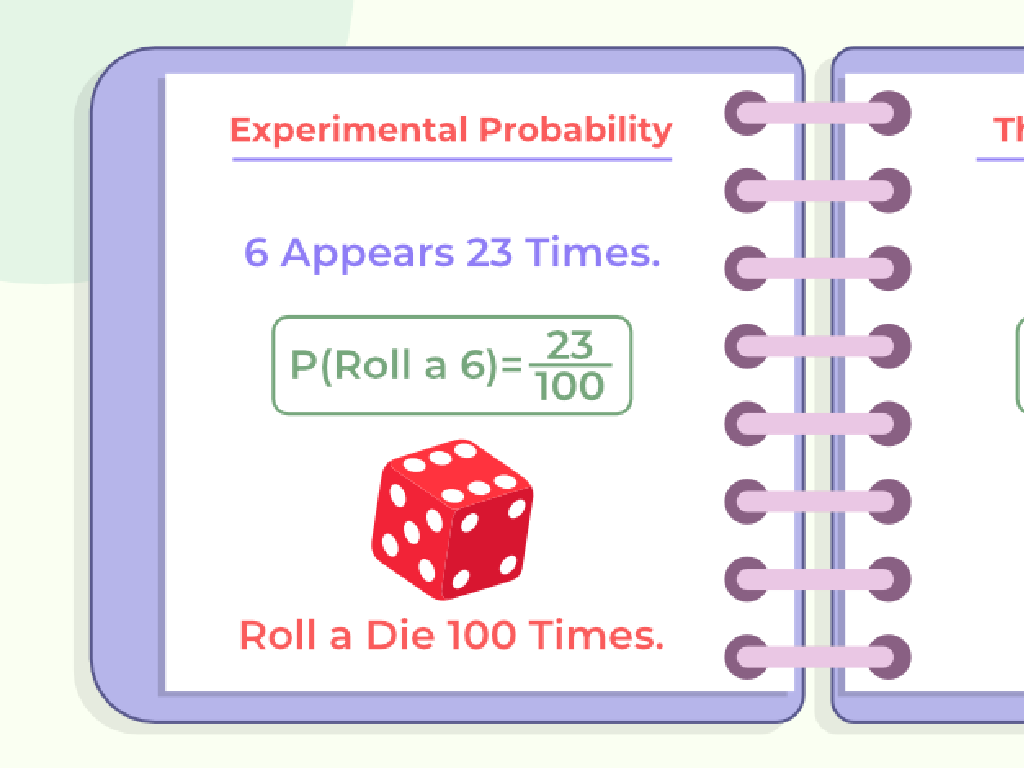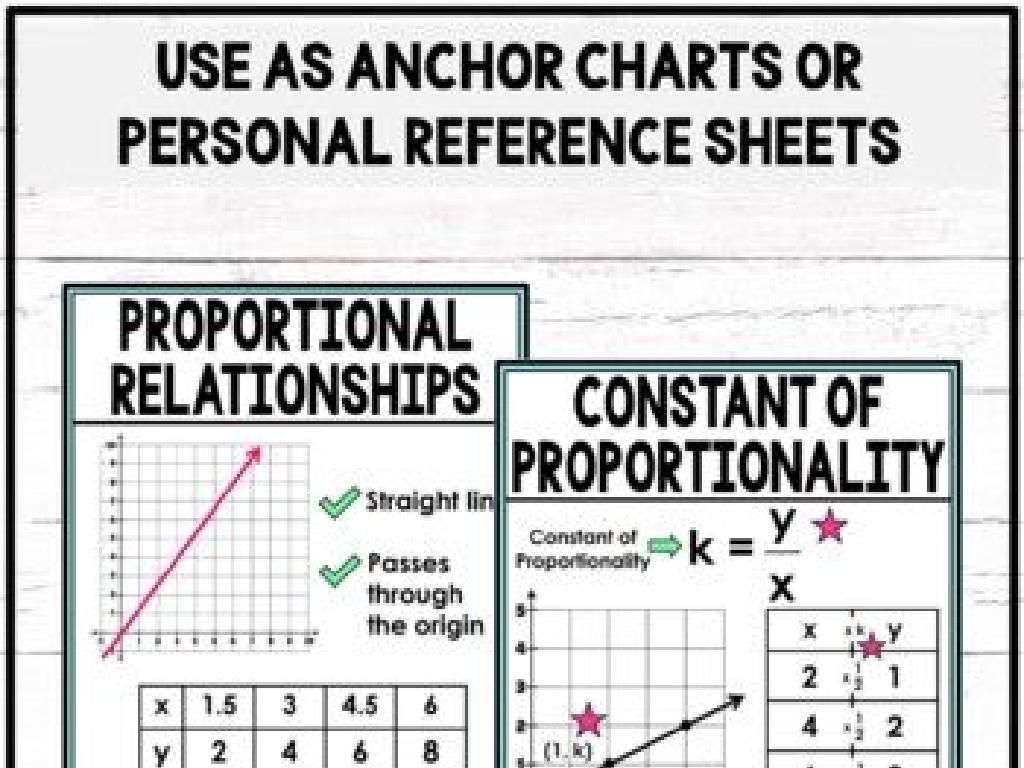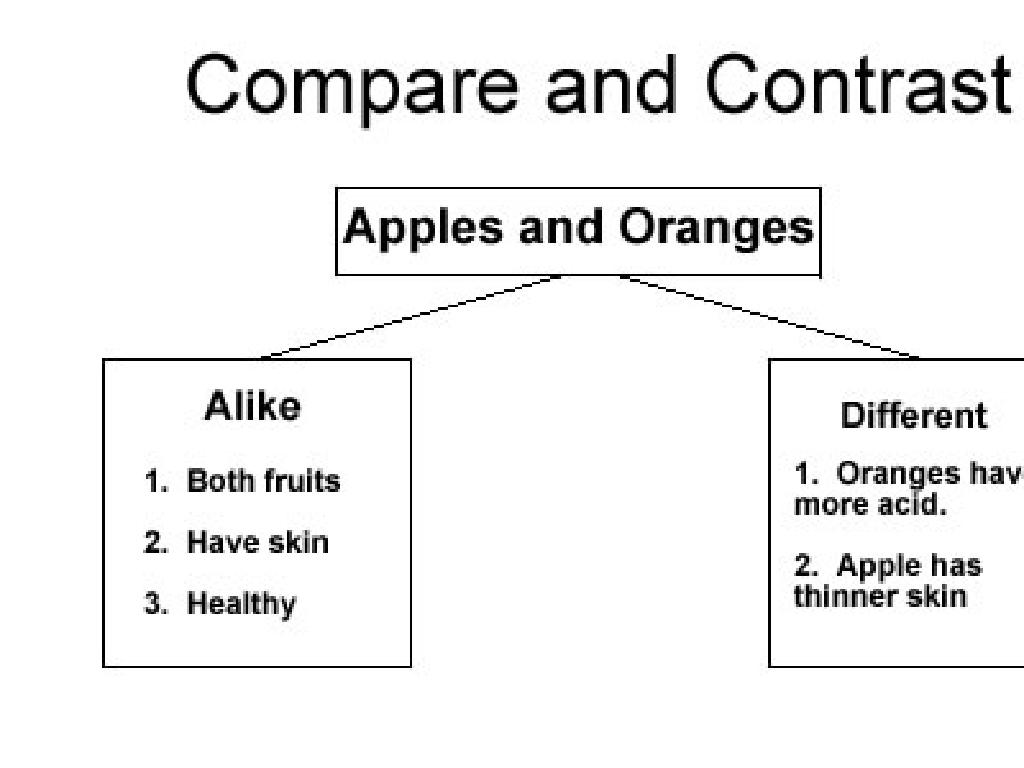Count Blocks - Up To 20
Subject: Math
Grade: Kindergarten
Topic: Counting To 20
Summary: This engaging Kindergarten math lesson helps students count to 20 using colorful blocks and exciting group activities. Through hands-on practice, games, and peer collaboration, children build number recognition and counting fluency. From stacking towers to counting with friends, each interactive slide reinforces foundational math skills in a fun, visual way. Perfect for building early number sense, this lesson encourages counting at school and at home using familiar everyday objects.
Please LOG IN to download the presentation. Access is available to registered users only.
View More Content
Welcome to Counting!
– Learning about numbers is fun
– Count blocks together up to 20
– We’ll use colorful blocks to count
– Counting shows how many items
– If we have 3 apples, counting tells us there are 3
– Practice makes us great counters
– The more we count, the better we get!
|
This slide introduces the concept of counting to young learners in a fun and interactive way. Start the lesson by expressing enthusiasm about numbers and their importance. Use physical blocks to visually demonstrate counting up to 20, which will help children understand the concept of quantity. Explain that counting is a tool we use to determine the total number of items we have, using everyday examples like counting fruits, toys, or even steps. Encourage the children to practice counting regularly to improve their skills. During the activity, walk around the classroom to ensure each child is engaged and assist any students who need help with counting the blocks.
Learning to Count: Up to 20
– What is counting?
– Counting tells us how many items are in a group.
– Counting things we see
– We can count anything: toys, fingers, blocks!
– Counting from 1 to 20
– Let’s learn to count all the way up to 20 together.
– Practice makes perfect
|
This slide introduces the concept of counting to young learners. Begin by explaining that counting is a way to find out how many things are in a group. Use relatable examples like toys, fingers, and blocks to illustrate the point. Demonstrate counting from 1 to 20 with the class, using visual aids like number charts or physical objects. Encourage the children to join in and count aloud together. Emphasize the importance of practice by suggesting they count items at home with their families. The goal is to make counting familiar and fun, setting a strong foundation for number sense.
Counting Blocks Together
– Each block is a number
– Line up blocks in order
– Place and say the number
– As we add a block, we’ll say ‘1, 2, 3…’ together
– Count up to 20 with blocks
– Practice counting as high as we can go, up to 20
|
This slide introduces a hands-on counting activity for Kindergarten students. Each block will represent a number from 1 to 20, helping students visualize the counting process. As the teacher, you will guide the students to line up the blocks in the correct numerical order. Encourage the students to say the numbers out loud as they place each block, reinforcing their understanding of the sequence of numbers. This activity not only teaches counting but also helps with number recognition and order. For variation, consider grouping students and having them count different sets of blocks, or challenge them to count backwards from 20 to 1.
Counting Blocks: Numbers 1 to 10
– Learn the first ten numbers
– Count blocks from 1 to 10
– One block for number 1, two blocks for number 2, and so on
– Arrange blocks in order
– Place blocks in a line starting with 1
– Practice counting together
– We’ll count as a class, each student can count a block
|
This slide is designed to introduce Kindergarten students to the concept of counting using physical blocks. Start by showing them the numbers 1 to 10 and then provide them with blocks to count. Encourage the students to count out loud as they place each block in the correct order. This hands-on activity will help them visualize the numbers and understand the sequence. Make sure to walk around the classroom to assist any student who might be struggling with the concept. As an extension, you can ask the students to group the blocks into even and odd numbers or to create simple patterns with the blocks to reinforce their counting skills.
Counting Blocks: Numbers 11 to 20
– Counting from 11 to 20
– Numbers bigger than 10
– These numbers are just like 1-10, but with a 1 in front!
– Sequence after 10: 11, 12, …
– 11 follows 10, then comes 12, up to 20
– Practice counting to 20
– Let’s count together using blocks or fingers
|
This slide is aimed at helping Kindergarten students become familiar with counting from 11 to 20. Start by reviewing the numbers 1 through 10 to ensure a solid foundation. Then, introduce the concept that numbers 11 through 20 are built by adding to 10. Use visual aids like blocks or fingers to help them visualize the counting process. Encourage the students to count out loud together and use repetitive games to reinforce the sequence. Remember to praise their efforts as they grasp these new numbers, and consider using songs or rhymes that include counting to 20 to make the learning process enjoyable and memorable.
Counting Practice: Let’s Count Blocks Together!
– Time to count your blocks
– Pair up with a buddy
– Find a friend in class to count with
– Take turns counting up to 20
– Count each block one by one until you reach 20
– Everyone gets a chance to count
– Make sure both you and your friend practice counting
|
This slide is designed for a hands-on counting activity where students will engage in collaborative learning. The goal is to reinforce their ability to count to 20 through the tangible use of blocks. Encourage the children to work in pairs, fostering social skills and cooperative learning. As they count, they should point to each block to ensure accurate counting. Observe the pairs to provide guidance and ensure each child has an opportunity to count. Possible variations of the activity could include: counting different colored blocks, stacking blocks as they count, or even grouping blocks into smaller numbers to add up to 20.
Fun with Counting Blocks
– Counting through play
– Pass and count a block game
– Each student gets a turn to add a block and count aloud
– Build a tower with blocks
– See how tall our block tower can get
– Learn to count up to 20
– Practice counting each block as we add it to the tower
|
This slide introduces a fun and interactive counting game for Kindergarten students. The objective is to make learning to count up to 20 enjoyable by incorporating a physical activity that involves passing and stacking blocks. Each child will participate by taking turns to add a block to a tower, ensuring they count out loud for the class to hear, which reinforces their counting skills. As the tower grows, children will visually and numerically see the results of their counting. The teacher should facilitate the game, help maintain order, and ensure each child gets a turn. The activity can be varied by using different colored blocks, counting in multiples, or by starting at different numbers to challenge the students further.
Block Tower Challenge: Counting to 20
– Let’s build a tower with 20 blocks
– Each student adds one block
– We count each block out loud
– Say the numbers together to practice counting
– Watch our tower grow as we count!
|
This class activity is designed to help Kindergarten students practice counting to 20 in a fun and interactive way. Each student will participate by adding a single block to the class tower, ensuring everyone is involved. As each block is placed, the class will count together, reinforcing number recognition and sequential order. The visual and physical act of building the tower will help students associate the numbers with a growing structure, making the concept of counting more concrete. For students who finish early or need an extra challenge, consider having additional activities such as coloring number sheets, arranging number cards in order, or counting other classroom items in groups of 20.
Review and Goodbye: Counting Up to 20
– Excellent work on counting to 20!
– Counting is useful every day
– Like knowing how many cookies you have
– Practice counting with fun items
– Use toys or snacks to count at home
– Keep practicing and have fun!
|
This slide is meant to congratulate the students on their achievement in learning to count up to 20. It’s important to remind them that counting is a skill they will use daily, not just in math class. Encourage them to practice counting with items they enjoy, such as toys or snacks, to reinforce their learning in a fun and engaging way. The goal is to end the lesson on a positive note, leaving the students with a sense of accomplishment and the motivation to continue practicing their new skills at home. For the next class, consider starting with a short counting activity to review what they practiced at home.





